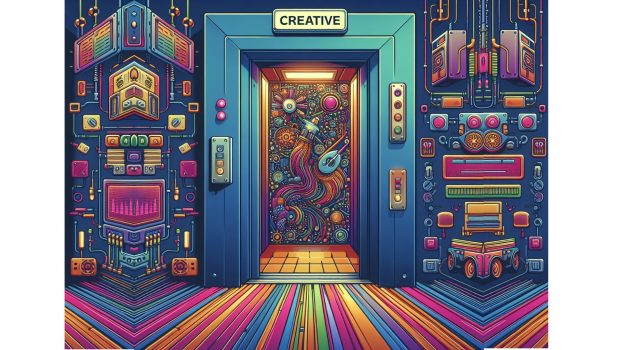How Marketers Can Elevate Creative Performance with AI-Driven Format Optimisation
by Mathew Broughton on 20th Mar 2024 in News

Increasingly-sophisticated AI tools are driving a renewed focus on dynamic creative optimisation, as marketers look to further leverage their datasets. To that end, in this contributed article, John Tigg, EVP, global client partnerships at Yieldmo, outlines the five key ingredients for effective use of machine learning in optimising creative formats, alongside notable challenges in the field.
Advertisers spend a lot of time and resources designing the perfect creative to capture the attention of their target audience. Frequently, however, they leave the very last and critically important step - where the creative and the user finally interact - to chance. This is the moment at which the creative format is determined, and it’s also the vital moment that determines whether an advertiser’s hard work and planning pays off as a good user experience.
The right creative format amplifies, without altering, the core underlying creative to produce a unique interactive experience. An intelligent creative format drives engagement with customers and improves a variety of key advertiser KPIs, including brand awareness and recall, attention, consideration, shoppability, site visits, and more.

For every opportunity that exists to serve a creative to a user, there are many possible creative format experiences. The final form of the creative format should not be the same in every scenario; it should be a product of the multitude of factors that converge at the moment the user and the creative meet.
The right creative format selection is everything when it comes to a successful user experience, but it’s also a challenge for advertisers: How does one choose the optimal format for their creative, given that millions of permutations of different intersecting factors define every ad opportunity?
Today, this “last mile” of optimisation is an interesting problem that machine learning (ML) is well-positioned to help solve. Let’s examine why that’s the case and what marketers need to know to ensure they’re building or selecting strong tools capable of elevating their creative performance.
The unique challenge of creative format optimisation
Every ad opportunity represents a unique intersection of the advertiser, the context, and the user. Each of these components is defined by a collection of attributes, each of which can have hundreds, thousands, or millions of values. Why so many values? Consider:
- Advertisers can be defined by their brands, products, and campaigns.
- The context can be defined by the publisher (site and app), content, and individual ad slot.
- The user can be defined by their audience and behavioral characteristics, their device attributes, and their unique situation in time and space.
The complexity of each ad opportunity positions machine learning (ML) as an ideal solution when it comes to creative format optimisation. Machine learning, a subset of AI, is an exciting field that allows us to make increasingly accurate multivariate predictions about what will happen using large volumes of historical data. It can find patterns in this data, make rapid and accurate decisions, and is effective at overcoming ambiguity and sparsity. Machine learning can uncover unexpected and unspecified truth conditions (features) and can make good predictions under novel circumstances.
These unexpected and unspecified features are especially powerful when comparing ML to the human-driven optimisation we often see in the ad tech industry. Machine learning provides a flexible toolbox for many types of problems, and the problem of choosing the optimal creative format for each ad opportunity is no exception.
The five critical ingredients for ML-driven creative format optimisation
To deliver the best format experience for your creative every time your ad serves, there are five critical ingredients that should be present within your dynamic creative optimisation tool, as derived from our whitepaper, "Elevating Creative Performance with Dynamic Format Optimization (DFO) and Artificial Intelligence (AI)".
Ingredient one: Formats
This might sound obvious, but the first essential ingredient to strong creative format optimisation is ensuring the tool has access to a broad selection of formats that can independently improve advertiser outcomes at serve time.
Ingredient two: Training data
For a ML model to predict the best format experience, you must have a mechanism to process, transform, and store large volumes of data. The data used to train the model must meet the following criteria:
- Be abundant, granular, and non sparse interaction data
- Correlate with downstream KPI outcomes
- Be representative of the buying environment where you plan to deploy your models
- Be identity-loss resilient and identity-independent (to be scalable and future proof)
Ingredient three: Modeling
To model successfully, a tool must start with a clear use case with a well understood and defined problem. In our case, that’s determining the best creative format to serve in real time. To build a reliable, consistent, and explainable process for model selection, you must have a process to:
- Train, evaluate, tune, test, and retire models
- Uncover which intersections of features are most predictive and important
- Adjust models based on individual performance
Ingredient four: Machine learning operations
To ensure your models are up to date, you need a robust infrastructure that can automate pipelines and collect, prepare, and score training data. Among other features, this infrastructure should be able to assemble customised models for new campaigns, refresh models at least daily, update models based on recent performance, track versions and monitor models, and provide for a robust experimentation framework (i.e., a/b/c/d tests).
Ingredient five: Activation
Finally, to deploy predictions into a real-time decisioning system, advertisers should build or look for tools that include the following features:
- A system for resolving collisions of feature predictions
- A fallback priority system
- Support for video, display, and native across all devices
- Flexibly trade-off scale vs. performance as needed by each campaign to hit the spectrum of KPI targets
- The ability to discard or block ad requests that are not viewable, fraud-free, brand-safe, aligned with the advertiser’s targeting strategy, or likely to yield valuable user interaction, regardless of the format
Putting dynamic format optimisation into action
The right creative format can significantly impact the success of advertising campaigns. By applying machine learning (ML) to the creative format challenge, you can optimise the creative format for each ad opportunity automatically and improve user engagement with your brand by delivering the best creative experience at every unique moment in time, to each individual customer.
Whether you are looking to build your own ML capabilities or leverage an out-of-the-box solution, you’ll want to ensure your solution covers the above key ingredients. If you’re looking to spin up something lighter weight but still capture a lot of value from format optimisation, there are some great options out there:
- You can accomplish a lot just by leveraging your DSP’s custom bidding models, where you can upload your own bid modifier models for different formats.
- If you want to go further, most major cloud providers provide end-to-end machine learning platforms that automate many of these steps.
Most importantly, if you don’t know who your exchange partners are, find out. If you don’t know what value your exchanges are providing you, ask. If they can’t prove their value, replace them with an exchange that is consistently building and innovating to help you succeed.
Finally, keep testing! When budgets get tight, make sure to fight for your testing budgets. No one knows what the next year will hold, but when the industry and economy changes (as it always does), you don’t want to be stuck with solutions that have lost their edge.








Follow ExchangeWire